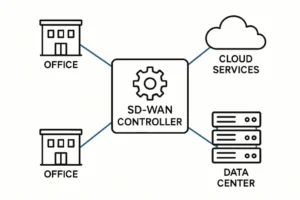Defining Competency Management
Competency management is the structured approach to identifying, assessing, developing, and leveraging the skills, knowledge, and behaviors employees need to perform effectively in their roles. It provides organizations with a framework to ensure that the right people have the right capabilities to meet business objectives. At its core, competency management aligns workforce capabilities with organizational goals, creating a shared understanding of what success looks like in each role. This goes beyond job descriptions, which often list duties and requirements without detailing the specific competencies that enable exceptional performance. By focusing on competencies, companies can create targeted training, improve hiring decisions, and better align employee development with strategic priorities.
Why Competency Management Matters
In today’s fast-changing business environment, the skills that were relevant yesterday may not be enough tomorrow. Competency management helps organizations remain agile by ensuring that employees continually build and refine their capabilities. This approach allows leaders to identify gaps in the workforce early and implement solutions before they affect productivity. It also fosters transparency—employees understand the expectations for their roles and what they need to do to advance. For employers, competency data becomes a valuable tool for workforce planning, succession management, and aligning performance reviews with real, measurable skills. Without competency management, businesses risk skill mismatches, inconsistent performance standards, and missed opportunities for employee growth.
Building the Competency Framework
Effective competency management begins with a well-structured competency framework. This framework defines the specific skills, behaviors, and knowledge areas required for each role or job family within the organization. Competencies are often grouped into categories such as technical skills, leadership abilities, problem-solving, communication, and customer service. Each competency is defined with measurable indicators, making it easier to evaluate employee performance consistently. The framework should also distinguish between core competencies (essential for all employees, like teamwork or integrity) and role-specific competencies (unique to certain positions). Developing this framework requires input from HR professionals, managers, and subject matter experts to ensure it reflects both current needs and future goals.
Applications Across the Employee Lifecycle
One of the strengths of competency management is its versatility—it can be applied at every stage of the employee lifecycle. In recruitment, competency profiles help hiring managers identify candidates who possess the right combination of skills and behaviors. During onboarding, they guide training priorities, ensuring new hires can quickly adapt to their roles. For ongoing development, competencies form the foundation of personalized learning plans, allowing employees to target the areas that will most impact their performance. Performance reviews also become more objective and meaningful when they are tied to competency-based criteria, as both managers and employees have a clear reference point for evaluating progress. In succession planning, competency data highlights employees with the potential to step into critical roles, enabling smoother transitions and reduced disruption.
The Role of Technology in Competency Management
Modern organizations increasingly rely on technology to support competency management initiatives. Human capital management (HCM) systems and learning management systems (LMS) often include tools for tracking competencies, mapping them to roles, and integrating them with training programs. Analytics features can identify skill gaps across teams or departments, allowing leaders to allocate resources where they are most needed. Some platforms also offer AI-driven recommendations for learning content based on competency assessments, accelerating skill development. By centralizing competency data, technology ensures that managers, HR, and employees all work from the same information, making the process more efficient and transparent.
Competency Management in Practice
In practice, competency management involves more than creating lists of required skills—it’s about actively engaging with the data to make informed decisions. For example, if a company’s strategic plan includes expanding into new markets, competency analysis might reveal that the sales team needs stronger cross-cultural communication skills or international business knowledge. Training programs can then be developed to fill these gaps, ensuring the workforce is ready for the shift. Similarly, if performance reviews consistently show weaknesses in a particular competency, leaders can investigate whether it’s a hiring issue, a training gap, or a lack of clear expectations.
Challenges and Best Practices
While the benefits are significant, implementing competency management is not without challenges. One common hurdle is defining competencies enough to be measurable while keeping them broad enough to apply to various roles. Another challenge is ensuring that the framework remains relevant as roles and business needs evolve. To overcome these issues, organizations should review and update their competency models regularly, involve managers in the process, and provide training on how to use competencies effectively. Communication is also key—employees need to understand why competency management is in place and how it will benefit them personally, not just the company.
Competency Management for the Future Workforce
The workplace is becoming increasingly dynamic, with remote work, automation, and evolving customer expectations changing the nature of many jobs. Competency management helps companies stay ahead of these changes by focusing on adaptability, continuous learning, and transferable skills. As new technologies emerge and industries shift, organizations that can quickly identify and build the competencies they need will have a competitive advantage. This future-focused approach ensures that competency management is not just a static HR process but a strategic driver of organizational resilience and growth.
Conclusion: Leveraging Competencies for Success
Competency management is a powerful tool for aligning people and performance with organizational goals. By defining the skills, knowledge, and behaviors that lead to success, companies can make better hiring decisions, improve training effectiveness, and create clearer career paths for employees. When integrated into the entire employee lifecycle—from recruitment to succession planning—it becomes a central pillar of talent strategy. Although it requires thoughtful planning and ongoing attention, the payoff is a more skilled, engaged, and adaptable workforce. In a business environment where change is constant, effective competency management can be the key to maintaining both stability and progress.
Also Read-Simple Payroll and HR Strategies Every Small Business Needs








